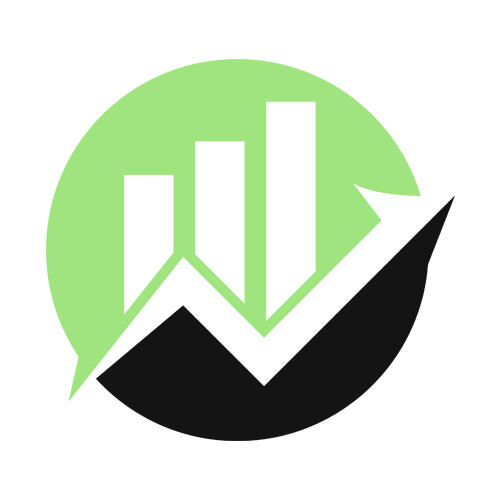Being self-employed in Canada offers numerous advantages, such as flexibility and control over your work. However, it also entails additional responsibilities—particularly regarding taxes. Managing your taxes as a self-employed individual can seem daunting, but with the right strategies and knowledge, you can streamline the process and potentially save money. Here’s a comprehensive guide to help you handle your taxes effectively.
Table of Contents
- 1. Understand Your Tax Obligations
- 2. Track All Income Sources
- 3. Maximize Your Tax Deductions
- 4. Set Money Aside for Taxes
- 5. Keep Detailed Records
- 6. Pay Taxes in Installments
- 7. Use Tax Software or Hire a Professional
- 8. Stay Organized Throughout the Year
- 9. Know Your Deadlines
- 10. Take Advantage of CRA Resources
- Final Thoughts
1. Understand Your Tax Obligations
As a self-employed individual, you are responsible for reporting all your income and paying the applicable taxes. Your tax obligations include:
- Federal and Provincial Income Tax – Calculated based on your total net income.
- Canada Pension Plan (CPP) Contributions – You must pay both the employer and employee portions.
- GST/HST (if applicable) – If your annual revenue exceeds $30,000, you are required to register for a GST/HST account and collect taxes on your sales.
Understanding these obligations is crucial to ensure compliance and avoid any penalties.
2. Track All Income Sources
Maintaining a detailed record of all your income sources is essential. This includes:
- Payments from clients
- Online sales or services
- Royalties, commissions, or other forms of compensation
Utilize invoicing software or spreadsheets to consistently track your income. Accurate record-keeping is vital for tax reporting and helps prevent potential issues with the Canada Revenue Agency (CRA).
3. Maximize Your Tax Deductions
One of the significant benefits of being self-employed is the ability to claim deductions for business-related expenses. Common deductible expenses include:
- Home Office Expenses – A portion of your rent, utilities, and property taxes if you work from home.
- Business Supplies – Office supplies, equipment, and software.
- Travel Costs – Expenses related to flights, accommodations, meals, and vehicle use for business purposes.
- Professional Services – Fees paid to accountants, consultants, or legal advisors.
- Marketing Costs – Advertising, website hosting, and promotional materials.
Ensure that all claimed deductions are directly related to your business and are supported by receipts or invoices. Proper documentation is essential in case of an audit.
4. Set Money Aside for Taxes
Unlike salaried employees, taxes are not automatically deducted from your income. To avoid a substantial tax bill at the end of the year, set aside a portion of your earnings—typically 25-30%—for taxes. Consider opening a separate savings account dedicated to these funds, which can help you manage your finances more effectively and reduce stress when tax time arrives.
5. Keep Detailed Records
The CRA requires you to maintain accurate records to support your tax filings. Essential documents to keep include:
- Receipts for all business-related expenses
- Bank statements and credit card records
- Invoices and payment records
- Copies of previous tax returns and Notices of Assessment
Store these records for at least six years in case of an audit. Organized records not only facilitate smoother tax filing but also provide a clear picture of your business’s financial health.
6. Pay Taxes in Installments
If you owe more than $3,000 in taxes ($1,800 in Quebec) in a single year, the CRA may require you to pay your taxes in quarterly installments. These are advance payments toward your annual tax bill, which help manage your cash flow and avoid hefty penalties.
How to Stay on Track:
- Mark payment deadlines – CRA installment due dates are typically in March, June, September, and December.
- Set up auto-payments – Ensure timely payments to avoid interest charges.
- Calculate estimates – Use CRA’s installment calculator to determine expected payments.
Setting up a payment schedule in advance can alleviate financial strain and ensure you stay on top of your tax obligations.
7. Use Tax Software or Hire a Professional
Filing taxes as a self-employed individual can be intricate, given the myriad of deductions, credits, and income sources you must navigate. Utilizing tax software or hiring a professional can significantly streamline this process and enhance accuracy.
Tax Software Options:
- TurboTax – User-friendly interface with guided tax filing.
- Wealthsimple Tax – Pay-what-you-want model with CRA NETFILE integration.
- H&R Block Online – Step-by-step tax filing support with audit protection options.
Hiring a Professional:
If your financial situation is complex—such as having multiple income streams, significant business expenses, or investments—it might be beneficial to consult a certified accountant or tax professional.
Benefits of Hiring a Professional:
- Ensure compliance with CRA regulations
- Identify missed deductions and tax-saving opportunities
- Provide strategic financial planning for long-term tax efficiency
While this option involves additional costs, the expertise and peace of mind they provide can be invaluable, potentially leading to greater tax savings and preventing costly mistakes.
8. Stay Organized Throughout the Year
Maintaining organized financial records year-round can make tax season less stressful and reduce the risk of overlooking deductions. Here are some strategies to stay organized:
Use Accounting Software
Tools like QuickBooks, Wave, or FreshBooks can help you track income and expenses in real-time. These platforms often integrate with your bank accounts, automatically categorizing transactions and providing financial reports that offer insights into your business’s performance.
Create a Filing System
Establish a systematic approach for storing important documents. Whether you prefer digital or physical records, ensure that receipts, invoices, contracts, and other crucial documents are easily accessible. Digital tools like Google Drive, Dropbox, or OneDrive can help keep your documents organized and backed up.
Regular Reviews
Set aside time each month to review your financial transactions. This practice helps keep your records up-to-date and allows you to identify any discrepancies early on, addressing them before they become significant issues.
Separate Personal and Business Finances
Maintaining distinct bank accounts and credit cards for business and personal use simplifies tracking and reduces the risk of errors. This separation is essential for accurate record-keeping and can be crucial during an audit.
9. Know Your Deadlines
Understanding and adhering to tax deadlines is essential to avoid penalties and interest charges. Key deadlines for self-employed Canadians include:
Important Dates:
- File Your Tax Return by June 15 – As a self-employed individual, you have until June 15 to file your tax return. However, if you owe taxes, the payment deadline remains April 30. Filing on time helps you avoid late filing penalties.
- GST/HST Filing Deadlines – If you’re registered for GST/HST, the filing frequency (monthly, quarterly, or annually) depends on your total revenue. Ensure you’re aware of your specific deadlines to avoid late filing penalties.
- CPP Contributions – CPP contributions for self-employed individuals are included in your tax return and are due by April 30, the same as your taxes. Ensure you calculate and include these contributions accurately.
Missing these deadlines can result in significant penalties, so it’s crucial to mark them on your calendar and set reminders well in advance.
10. Take Advantage of CRA Resources
The Canada Revenue Agency (CRA) provides a wealth of resources specifically designed to assist self-employed individuals. Utilizing these resources can help you navigate your tax obligations more effectively:
CRA Tools and Services:
- Guides and Publications – The CRA offers detailed guides on self-employment taxes, deductions, and filing requirements. The Business and Professional Income Guide is a great starting point.
- Online Calculators – Use the CRA’s Business and Professional Income Calculator to estimate your tax liabilities and plan accordingly.
- Webinars and Workshops – The CRA frequently hosts free sessions on tax planning, deductions, and updates to tax regulations.
- CRA Business Enquiries Line – If you have specific questions, you can contact the CRA’s Business Enquiries helpline for direct assistance.
Staying informed through these resources can help you optimize your tax filings, avoid mistakes, and ensure compliance with CRA regulations.
Final Thoughts
Navigating the tax landscape as a self-employed Canadian may seem daunting, but with proper planning, organization, and knowledge, it’s entirely manageable. By:
- Understanding your tax obligations
- Tracking income and expenses meticulously
- Maximizing eligible deductions
- Staying ahead of deadlines
- Leveraging CRA resources
You can ensure compliance while minimizing your tax liabilities. Additionally, using tax software or consulting with a professional can provide valuable insights and streamline the process.
Effective tax management not only keeps you compliant but also contributes to the overall health and growth of your business. If you ever feel overwhelmed, seeking professional advice can give you peace of mind and help you focus on what matters most—growing your business.







